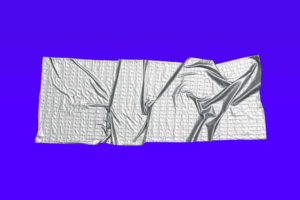What Makes People Lean Into Software?
It can’t all be appetizers. Sometimes you need to serve an entree.

Building the bridge from consumption to empowerment takes a lot of time.
Everything is free now
That’s what they say
Everything I ever done
Gonna give it away
— Everything is Free Now, Gillian Welch
Want more of this?
The Aboard Newsletter from Paul Ford and Rich Ziade: Weekly insights, emerging trends, and tips on how to navigate the world of AI, software, and your career. Every week, totally free, right in your inbox.
So it’s 8:30 PM, and after a long day, my wife mutters: “Let’s watch something.” We spend 40 minutes skimming Hulu and Netflix trailers, and then we just give up—the twentieth trailer winds down and she says: “I get the gist. We don’t need to watch it.”
I think this tendency to skim, skim, and skim some more is actually built into the modern web. The web is a vast transactional platform, which means it reduces relationships to…well, transactions. I’m not only talking about human relationships (think Tinder). Or business relationships (think LinkedIn).
We skim everything. Music, movies, articles. Startups are trying to use AI so we don’t have to listen to entire podcasts—they’ll listen for us, then spit out a bulleted list. If I was to summarize the last 30 years of the web in three words (about all anyone has time for) it would be: “More transactions faster.”
Getting to “Get!”
Most software products in 2024 start free. Apps today puff out their chests with confidence: “Just try me out. You’re gonna love it!”

Seems naive to me! The same industry that taught us to skim forever now foolishly assumes we have the patience to commit to anything. Consider:
- You’ve conditioned us to consume shorter and more concise bites of content.
- You’ve put unlimited options in front of us.
- You’ve told us there is no consequence to trying something and then throwing it away (i.e., it’s “free”)
Why would anyone build an app or platform and put it out in the world? We’re better off selling real things that are scarce. Like donuts or jewelry.
From passive observer to active participant
Aboard is playing the same game as everyone else, of course! We build software, we market it, and we push towards a future state where someone might want to get out a personal or corporate credit card—or seek to use Aboard as a platform for their next big thing. We didn’t go into the donut business, even though we would have made amazing donuts.
When we look at our numbers, we see that most people check Aboard out, dabble a bit, then drift off. That’s expected. But we also see that a really good percentage become intense users of the tool. We want to get people over the chasm from pure consumer (“I’m here to consume this bag of starch and sugar”) to power user (“I’m here because I feel empowered when I use Aboard.”).
One of the things that obsesses me is: What will drive that relationship? We have metrics, of course. We know that people who add more cards stick around longer. But I’ve personally tried hundreds of tools and apps and I’ve tossed aside 95% of them. Why do 5% survive? What’s different about them?
There’s no magic formula, unfortunately—but I do think you can increase the chances of someone taking that leap if you focus on a few things:
- Reinforce existing skills. If you’re going to let people do something, let them lean on the skills they already have. Spreadsheets are used by billions of people. It feels good to not be confused.
- Offer up beautiful things. Even the most mundane of tools will be more appealing if they’re visually attractive. I use Bear for note-taking. There are 5,000 note-taking tools for Mac. Bear is beautiful, and it makes my writing look great.
- Give people an early win. Mobile games use this trick. When I come into your experience, make me feel successful within the first 60 seconds. Give me a win. Nobody cares about how smart ChatGPT is. They care about looking smart with their friends or at their job.
- Build careers around your platform. In today’s world of automation and abundance, people matter more than ever. Notion rode the wave of ambassador energy. Salesforce has a massive…sales force. Superhuman won’t sell you their product unless you talk to a human! People interacting turns out to be a key differentiator in tech. Who knew!
The low hum in the background of all this is AI. AI is exciting to some and scary to others. Will it take our jobs? Will it kill us? Technology has been softening the target (our brains) for 20 years now. How do we win? Are we losing? Is this a game?
Right now AI is being marketed as the ultimate shortcut: It skims, it summarizes, it shortens, it draws pictures for you without artists involved. At Aboard, we see AI a little differently—as a big, gleaming bridge spanning across that chasm between consumers on one side and empowered users on the other. Instead of just asking how AI can get us answers quickly, we’re asking how AI can make us more productive. People are using AI to generate essays and images. Can we use it to generate tools? We think so.
Speaking of movie trailers, this week’s newsletter is yet another movie trailer. We appreciate you sitting through it. My friend and business partner Paul is very wary of making promises of software that doesn’t exist. He’s probably right. Then again, everyone loves a good movie trailer!


